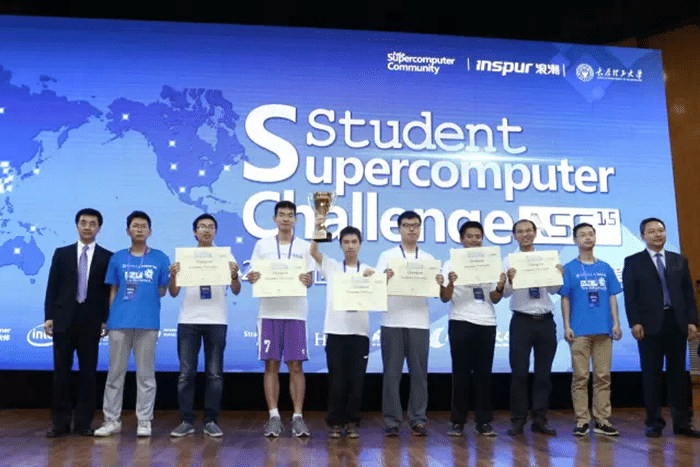Our Tesla Accelerated Computing Platform has again powered the winning team in a major international student supercomputing competition.
And, GPU technology helped another team set a student record in the supercomputing industry’s top performance benchmark.
GPUs Help Tsinghua University Prevail, Again
For the third year in a row GPU technologies have helped a team nab the top spot in the Asia Student Supercomputer Challenge, the world’s largest supercomputer competition.
This year, 152 teams from around the world took part. Sixteen from around the globe made the cut to compete in the finals, which are held in Asia every year.
Held recently in Taiyuan, China, ASC15 pitted the finalists against one another other on seven different application benchmarks. These included three popular scientific applications – NAMD, PALABOS and WRF-CHEM.
Tsinghua University, aided by the flagship of our Tesla Accelerated Computing Platform, the Tesla K80 GPU accelerator, grabbed the highest overall score.
The victory marks a return to the top for Tsinghua University, which used our Tesla K20 GPUs to win top honors at ASC in 2013.
New GPU-enabled Performance Record for Third Time
Singapore’s Nanyang Technological University achieved a major GPU-enabled milestone, too.
With a system equipped with eight NVIDIA Tesla K80 dual-GPU accelerators, Nanyang Technological University won the “Highest Computing Performance Award.” They did this by achieving a new record on LINPACK, the industry benchmark used to measure supercomputer performance.
Reaching an impressive 11.92 teraflops — a trillion floating point operations per second — the team leapfrogged the previous winning mark of 10.1 Tflops.
That mark was set by the University of Edinburgh with their GPU-powered system during the student cluster competition at the International Supercomputing Conference last June. Before that, China’s Sun Yat-sen University set the record of 9.27 Tflops at ASC14, also with GPU accelerators.
GPUs gave these teams more than just power. They also provided efficiency. That let these teams stay within the competition’s three-kilowatt power limit.
The post GPUs Power Winner in Student Supercomputer Contest, Shatter Performance Record appeared first on The Official NVIDIA Blog.
